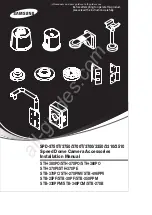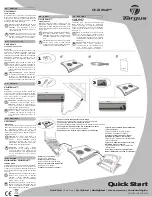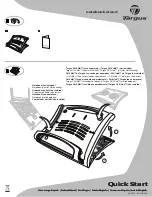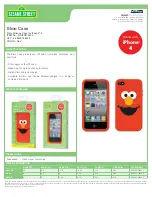
Fitting and using the wheelchair and occupant restraint - Kit 6 & Kit 7
Fit and use
Fitting the occupant restraint
•
BraunAbility recommends the use of a 3 point occupant
restraint system to provide greater protection in case of
an impact. However we also recognise that some vehicle
layout/designs or specific postural or medical conditions
do not allow that style of seatbelts to be used easily.
•
This system is not ISO 10542 compliant if used in 2 point
configuration.
1. Position the occupant restraint behind the wheelchair tie-
down, with reel housing (Fig 12A) on the window side of
the vehicle and reversible/fixed stalk (Fig 12B) on the aisle
2.
Fit the occupant restraint track fitting into the rail ATF
(aluminium track fitting) by aligning the ATF feet with the
cut-out sections of the rail. Locate into the rail, (Fig 2).
3. Press on the ribbed part of the ATF, (Fig 2A), and push
firmly towards the wheelchair until the yellow plunger
drops and locks into the rail.
4.
Position the third point fixing into the cant rail, (Fig 8), so
that it is vertically above the inertia reel casing fixed onto
the floor fixing. Unfasten the tongue and buckle.
5. Pull the black webbing upwards and unfasten the tongue
from the grey webbing buckle.
6. Position the black webbing to form the lap belt and insert
the tongue into the buckle stalk, (Fig 9).
•
Before fitting the occupant restraint, ensure that the
reversible stalk orange button is facing outside in relation
to the wheelchair. If the reversible stalk orange button faces
inside, turn the stalk 180º to sit in the right position.
•
In accordance with International regulations, standard
BraunAbility occupant restraints are designed to be used
for passengers weighing 22kg or above. If the passenger
weighs less than 22kg, BraunAbility recommends that a
suitable, and appropriately tested child restraint seat is
used. This may involve a secondary seat belt restraint as
recommended by the original seat manufacturer.
7. Ensure that the lap belt lays low on the pelvis of the
occupant, running as close as possible over the hips on both
sides.
8. Remove the black plastic cover on the grey shoulder belt
tongue and fit into the third point fixing. Position the grey
webbing to form the shoulder belt and insert the buckle
into the tongue.
9. Adjust the height of the shoulder belt to clear occupant’s
shoulder by approximately 25mm - 1 inch, (Fig 10).
10. The lap belt anchor points should be positioned to achieve
belt angles of 30° or more to the horizontal and preferably
between 45° and 75° in order to fit low across the pelvis
reducing the possibility of the belt loading the abdomen,
(Fig 11). The pelvic restraint is designed to bear upon the
bony structure of the body and should be worn low across
the front of the pelvis with any junctions between the pelvic
and shoulder restraints located near the wearers hips.
14
Kit 6 and Kit 7
Содержание Kit 6
Страница 1: ...EN Instructions for fitting and use Kit 6 Kit 7 User Manual...
Страница 5: ...Kit 6 Kit 7 5 Kit 6 and Kit 7 EN Safety information...
Страница 11: ...Figure 3 Figure 2 Figure 1 A Figure 4 11 Kit 6 and Kit 7 EN Fit and use...
Страница 13: ...Figure 6 A Figure 5 C B Figure 7 13 Kit 6 and Kit 7 EN Fit and use...
Страница 15: ...A A B Figure 10 Figure 9 Figure 8 Figure 11 Figure 12 15 Kit 6 and Kit 7 EN Fit and use...
Страница 18: ...Figure 3 A Figure 5 Figure 4 Figure 13 A B 18 Kit 6 and Kit 7...
Страница 22: ...UI2303B www braunability eu...








































